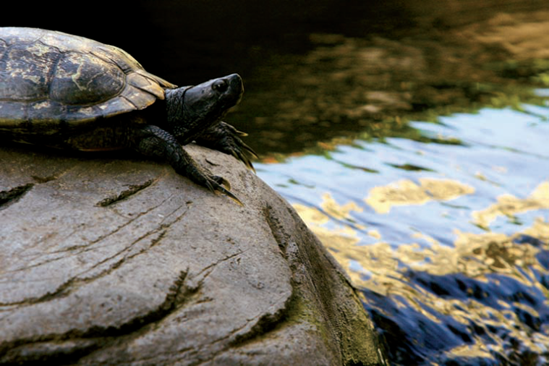Chapter 10. Landscape and Nature Photography
Successful landscape and nature photography involves seeing the light before making the exposure and submerging yourself in the natural beauty of your surroundings. It also pays for you to be flexible enough to switch gears and shoot something else when the light is not working to your satisfaction for your particular subject matter. Knowing when to add a reflector or additional light source is also an important skill.
Being sensitive to the time of day and what nuances of light you have at your disposal are key to coming back with images you can be proud of. Knowing what shooting modes to use and having the right gear are important, too, whether you're on a short hike or an extended vacation to some exotic location.

A rock-bound turtle about to take the plunge into the stream. Exposure: ISO 500, f/5.6, 1/400 second.
Preparation and Considerations
Landscape and nature photography is one of the best ways to bring many shooting disciplines together to create the best images you can. The wide array of subjects, the unpredictability of weather, and the simple pleasure of immersing yourself in the natural world are irresistible lures.

Figure 10.1. Lenticular clouds over Mount Hood in Oregon fill the sky after sunset. Exposure: ISO 640, f/8, 1/250 second, ...
Get Lighting Digital Field Guide now with the O’Reilly learning platform.
O’Reilly members experience books, live events, courses curated by job role, and more from O’Reilly and nearly 200 top publishers.

